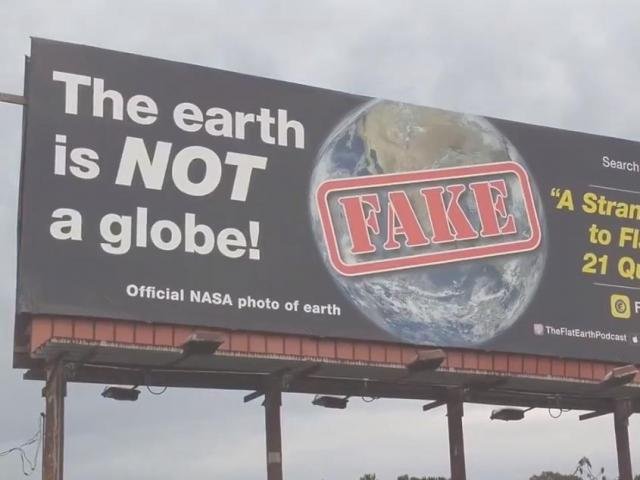Flat Earthers spread their misinformation for attention

Photo courtesy of WRAL News
It’s a given in society that people will twist their ideals or just flat-out lie to be believed. People do this anytime they tell someone that their shirt looks good when it doesn’t, or when people slightly shift or hide their political beliefs to fit in with a group. While this is all generally harmless, what if there was a group of people whose entire motive was to lie to find a community and seek attention?
Throughout history, it was widely believed that the Earth was flat until the Greek philosopher Aristotle provided strong evidence proving otherwise. Despite this proof, there has been an enduring group of believers known as flat Earthers. These people gathered to form a group known as The Flat Earth Society which saw a revival in 2004[MS1] . The organization holds the belief that the true shape of Earth is being concealed by the government in some sort of mass conspiracy because governments need to brainwash the population to gain more power and make a profit. Ironically, they’re the ones who are spreading false information, as people like Michael Marshall or even Kyrie Erving use their large following to spread this conjecture. Not only that but thousands of people attend the Flat Earth International Conference, showing that there is a bizarrely large group who hold these beliefs.
I don’t need to explain how I know that what they believe is false. Flat Earthers repeatedly attempt to prove their theory and in the process only prove how the Earth is round – like in the case of Bob Knodel. He wanted to prove the Earth was flat by using two beams of light at opposite ends of the Earth to prove there was no 15-degree-per-hour drift. This experiment led to one of the funniest moments of scientific ineptitude I’ve ever seen where Knodel adjusted the light to, you guessed it, 15 degrees. Knodel seems completely blind to the result, even though he then conducted another test with a $20,000 gyroscope only to get the same result. The fact that someone can prove himself wrong this many times and still be completely stuck in his beliefs proves that he can’t truly believe that the Earth is flat.
So why do they lie about the Earth even though they have no evidence? Well, they do it for a community. The flat Earth community is a small but passionate one where their nonsensical beliefs lead them to find friends among like-minded people. The reason that a person pretends to like a gift may be the same reason that someone claims that they think the Earth is flat.
The second, more obvious reason is attention. In the TikTok era, attention is a currency, so of course people would be throwing out wild theories for the attention of the media. Flat Earthers have been the center of numerous articles, YouTube videos and even an entire Netflix documentary. The fact that they have these things to gain leads me to believe that most of them generally don’t believe any of the garbage they spew; they just want to gain from it.
When flat Earthers spread their rhetoric on social media, gullible and uninformed people are susceptible to it. It’s like the recent anti-vax movement: they both involve an objectively proven concept being challenged with no evidence. Their efforts have shown to be somewhat effective, as around 10% of respondents in a recent poll said that they believed in one of the three largest conspiracies (Flat Earth, anti-vax or the moon landing). If more people begin to believe these false claims, it may lead to an uninformed and mindless society.
Modern flat Earthers have virtually no reason to believe in their cause. They have so much evidence to the contrary, yet they stubbornly stick to their beliefs for attention and a sense of community. I understand the motivation, because in our society, attention and community are highly valued, but peddling archaic beliefs is only disruptive.
This article has been archived for your research. The original version from The Hofstra Chronicle can be found here.


